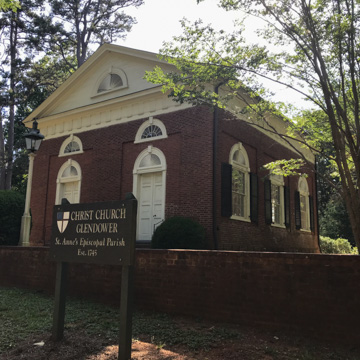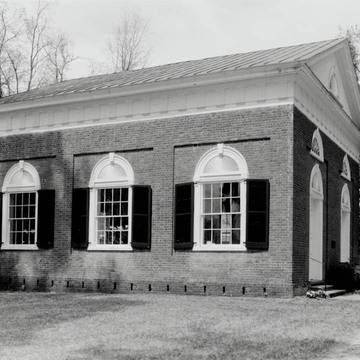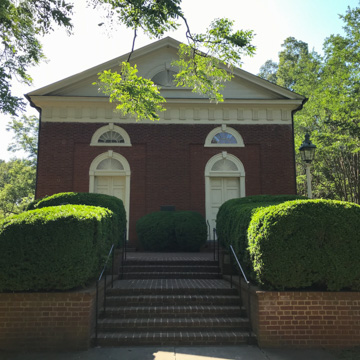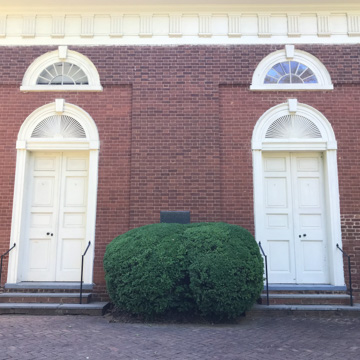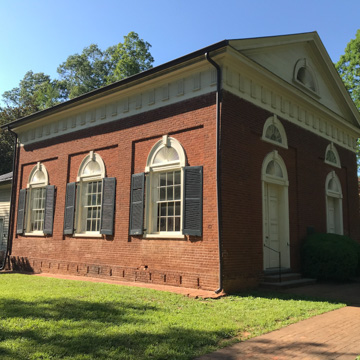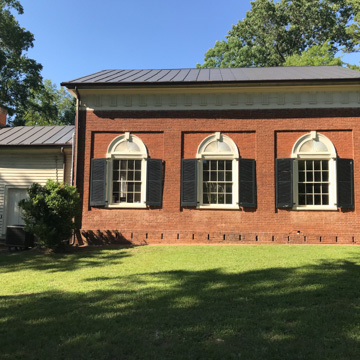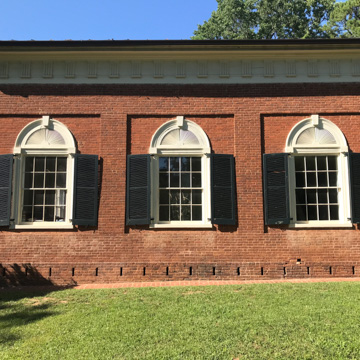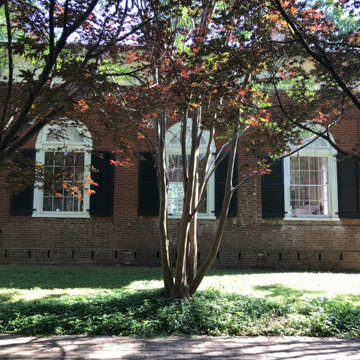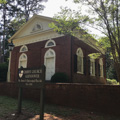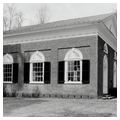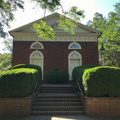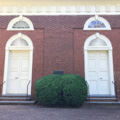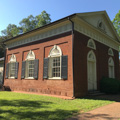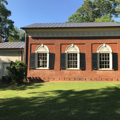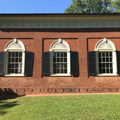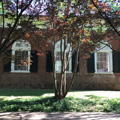Phillips, a mason recruited from Richmond to work on the University of Virginia, created a delightful play on the Roman idiom favored by Jefferson. Phillips's church is a simple brick temple, without the portico often found in his mentor's work. A full Doric entablature, a familiar element from Jefferson's work at the University of Virginia, encircles the building below the eaves. The pediment above the double entry contains a very Jeffersonian lunette window. In Phillips's hands the familiar lunette window form, borrowed from the work of his former employer, becomes the dominant motif of the exterior. At the consecration, future bishop William Meade, a key figure in the revival of the Episcopal Church in Virginia, described Phillips's work as “a neat and excellent brick church.”
You are here
Christ Episcopal Church, Glendower
If SAH Archipedia has been useful to you, please consider supporting it.
SAH Archipedia tells the story of the United States through its buildings, landscapes, and cities. This freely available resource empowers the public with authoritative knowledge that deepens their understanding and appreciation of the built environment. But the Society of Architectural Historians, which created SAH Archipedia with University of Virginia Press, needs your support to maintain the high-caliber research, writing, photography, cartography, editing, design, and programming that make SAH Archipedia a trusted online resource available to all who value the history of place, heritage tourism, and learning.








